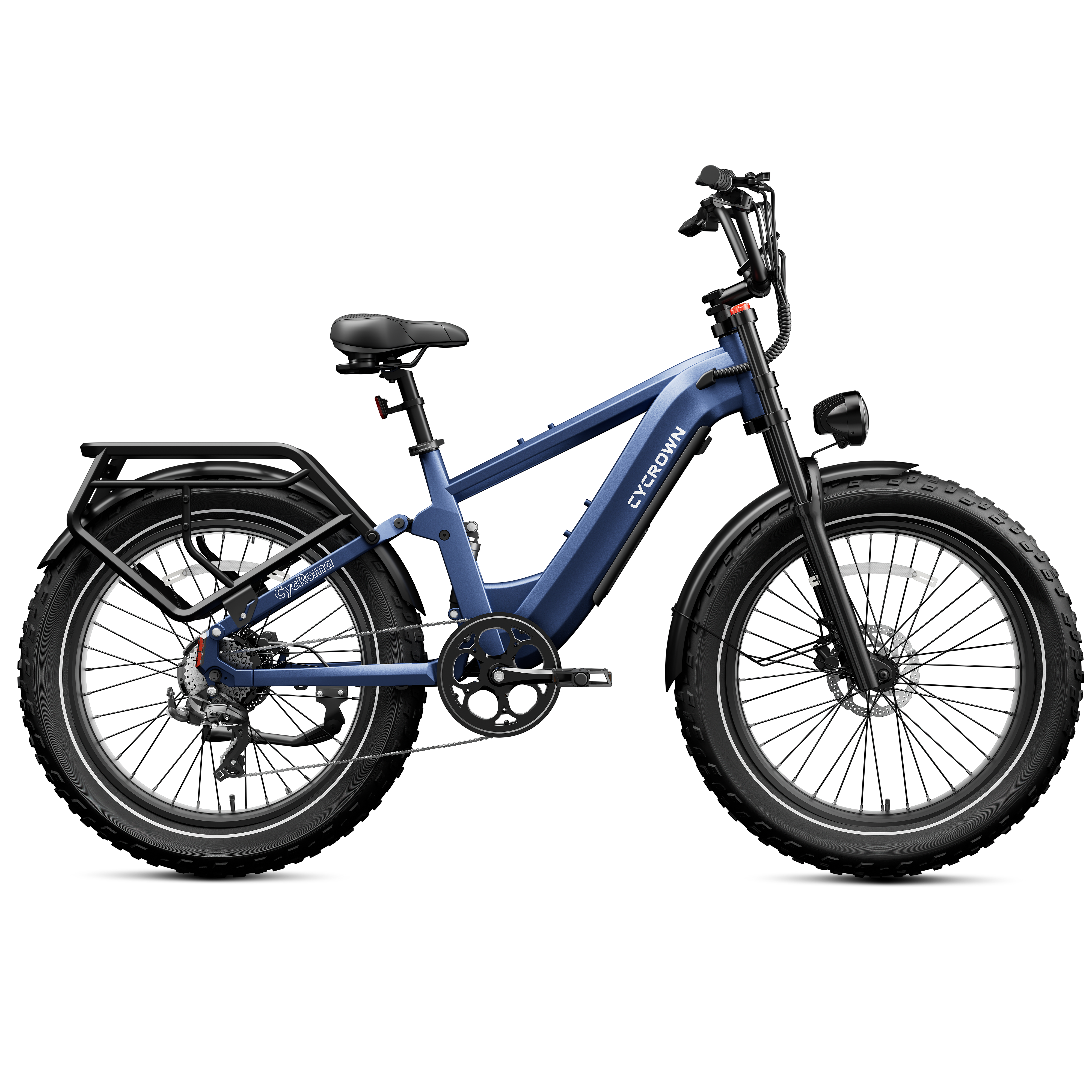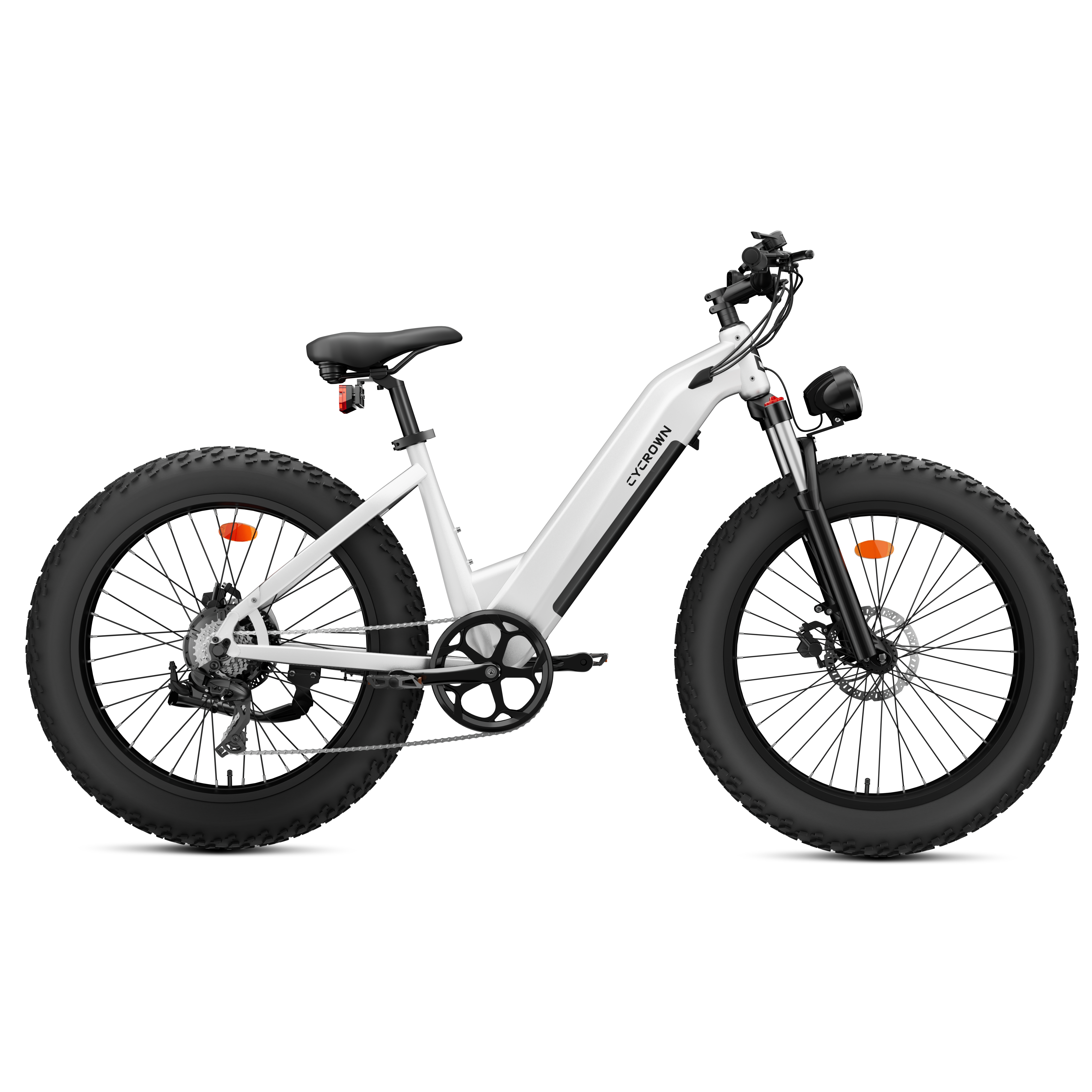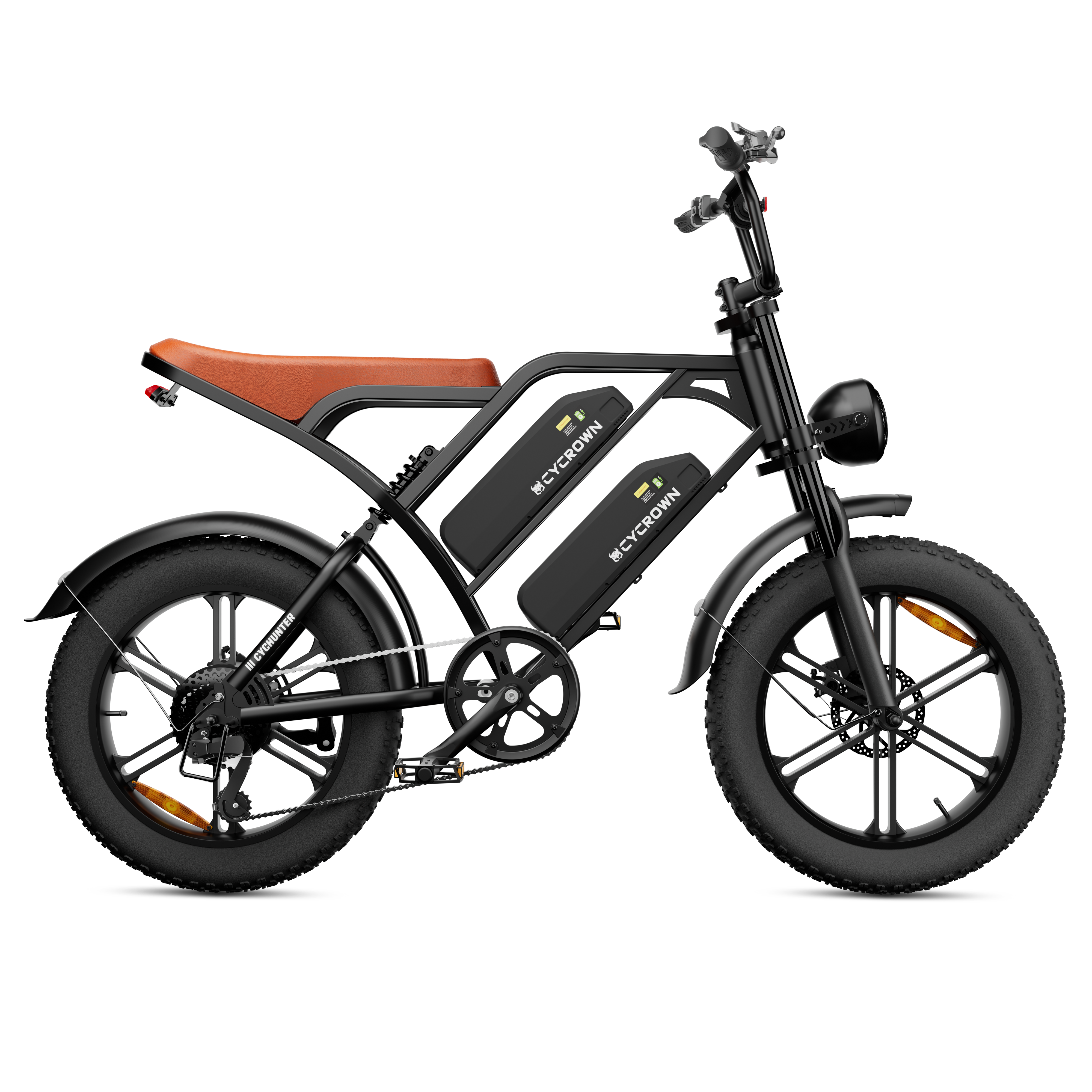If you want to understand how e-bikes work, you're not alone. E-bikes have a compact electric motor that gives you extra power when you pedal, making it easier to climb hills or travel longer distances. An e-bike works by giving you assistance when you pedal, so you can ride faster and farther without struggling.
You can usually control how much help you get, so riding feels natural and easy. Some e-bikes even let you use a throttle if you need a break from pedaling. These features make e-bikes a great choice whether you’re commuting, exercising, or exploring new places.
This guide explains everything you need to know, how e-bikes work, what makes them unique, and why they’re perfect for riders of all ages and abilities.
Key Takeaways 💡:
- E-bikes use a battery and electric motor to assist your pedaling.
- You can control the level of electric help you get as you ride.
- They make hills, long distances, and heavy loads much easier.
- Most e-bikes have easy controls and multiple assist settings.
- Read on for a breakdown of ebike parts, how they work, and real-world tips.
If you want to understand how e-bikes work, you're not alone. E-bikes have a compact electric motor that gives you extra power when you pedal, making it easier to climb hills or travel longer distances. An e-bike works by giving you assistance when you pedal, so you can ride faster and farther without struggling.
You can usually control how much help you get, so riding feels natural and easy. Some e-bikes even let you use a throttle if you need a break from pedaling. These features make e-bikes a great choice whether you’re commuting, exercising, or exploring new places.
How Do Ebikes Work? The Basic Mechanics

An e-bike uses an electric motor and several key parts to help you ride faster or with less effort. You interact with the bike through the pedals and controls, while electronics do the rest of the work in the background.
The 4 Key Components Powering Every Ebike
Every e-bike relies on four main parts:
- Motor: This does the hard work, turning electrical energy into motion to help spin the wheels. Motors are usually on the hub or cranks.
- Battery: This is the power source. It stores energy and can be taken off the bike to charge.
- Controller: The brain of the system. It manages how much power goes from the battery to the motor based on your needs.
- Sensors: These monitor your pedaling and sometimes your speed. They tell the controller when to turn on the motor and how much help to give you.
Each component is important. Without one, the system would not work as intended.
The Power Flow Explained
When you ride an ebike, energy travels in a specific path:
- The battery supplies electrical power.
- The controller receives it and processes signals from the sensors.
- The sensors detect if you are pedaling or at what speed.
- The controller decides how much power is needed.
- The motor gets the right amount of energy and helps move the wheels.
This process lets you get extra help during tough hills or long rides. The sensors quickly adjust the power so you feel a smooth and natural boost while riding. If you stop pedaling, power drops off automatically, saving battery for when you need it again.
How Do Ebikes Work Differently From Regular Bikes?

Ebikes use a motor, battery, and sensors to help you when you ride, while regular bikes rely only on your own strength. This extra technology changes how you ride, making hills and long distances easier.
Pedal-Assist System (PAS) Mechanics
A pedal-assist system, or PAS, is the main feature that separates an ebike from a regular bike. When you pedal, sensors on the ebike measure how hard and how often you push. There are two main types of sensors:
- Torque sensors: These measure how much force you use when pedaling. The more you press, the more the motor helps.
- Cadence sensors: These count how many times you turn the pedals and provide power based on your pedaling speed.
Most ebikes let you pick from different power levels. These are often called Eco, Normal, or Turbo modes. Lower settings save battery, while higher settings give you more help.
The motor only kicks in while you are pedaling, so it feels a lot like riding a regular bike but easier, especially up hills.
Throttle System Operation
Some ebikes have a throttle, which works like a scooter. The throttle can be a twist-grip or a thumb lever that you push with your hand. When you use the throttle, the motor turns on and moves the bike forward, even if you are not pedaling.
Key features of throttle systems:
- Instant power: Just push or twist, and the bike goes.
- No need to pedal: The motor does the work for you when the throttle is used.
- Maximum speed: Most Class 2 ebikes limit throttle-only riding to 20 MPH for safety.
This setup gives you a quick boost when you need it, such as starting from a stop or going up a steep hill. It is different from regular bikes, as they never have a throttle that drives the wheels without pedaling.
Motor Types - How Do Ebike Motors Work?
Electric bike motors mainly come in two common styles. Each type is placed on a specific part of the bike, giving it its unique riding feel and benefits for different types of riders.
Hub Motors (Most Common)
Hub motors are built into the center of either the front or rear wheel. When you turn on the motor, it spins the wheel directly, making movement simple and smooth. This design is the most common because it costs less and requires very little maintenance.
Key points about hub motors:
- Found in the front or rear wheel
- Simple to repair and easy to use
- Low cost compared to other motor types
- Heavier, which can make your bike a little harder to lift
- Not as efficient when going up steep hills
Hub motors are a good pick if you mainly ride on flat city roads. They deliver steady power and are great for short commutes. If you want a budget-friendly ebike and don't plan to climb many hills, this motor works well.
Mid-Drive Motors (Premium Choice)
Mid-drive motors sit at the center of the bike, usually near the pedals and crank arms. They send power directly to the bike chain, which turns the back wheel. This helps you take full advantage of the bike's gears.
Advantages of mid-drive motors:
- Gives better balance by placing weight in the center
- Very helpful on steep hills or when carrying heavy loads
- Uses the bike’s gears for smarter power use
- More expensive than hub motors
- Can cause faster wear on your bike’s chain and gears
If you plan to ride up lots of hills or want a more natural biking feel, a mid-drive motor is likely your best choice. These motors are popular among serious riders who value performance.
Battery Systems - The Ebike Power Source
Your ebike’s battery is where the motor gets its energy. How far you can ride and how powerful your bike feels depend mostly on this key component.
Voltage & Capacity Explained
Most ebikes use lithium-ion batteries. These are lightweight and last longer than older types. The voltage of your battery, usually between 36V and 52V, affects how much power your motor gets. A higher voltage battery can make your bike go faster and handle steeper hills.
Capacity is measured in amp-hours (Ah). This number tells you how much energy the battery can store. A higher amp-hour rating means you can ride farther before charging. For example, a 10Ah battery will last longer than a 7Ah battery if everything else is the same.
Key points:
- Typical voltage: 36V, 48V, or 52V
- Higher voltage = more power
- Higher amp-hour = longer rides
- Lithium-ion batteries are common because they are efficient and last longer
Real-World Range Factors
How far you actually go on a single charge depends on more than just battery specs. Your weight, the road, and how you ride all make a difference.
Here are the main things that affect range:
- Heavier riders use more battery to move
- Riding uphill or on rough ground drains the battery faster
- Using the highest assist or throttle setting will make the battery run out sooner
- Cold or very hot weather can lower battery performance
By paying attention to these details, you can get the most out of every charge and avoid running out of power far from home.
Benefits of Ebikes: Why More People Are Riding Electric Bikes

Riding an e-bike can make your daily trips easier. You can go up hills and cover long distances without getting too tired. This means you are less likely to arrive sweaty if you use your e-bike to get to work.
Ebikes are great for carrying things like groceries, cargo, or even kids. The motor helps you handle extra weight, making shopping trips or school runs much simpler.
You can use an e-bike in place of a car for short rides. It saves money on gas and reduces your carbon footprint. Charging an e-bike costs less than filling up a gas tank.
Ebiking gives you exercise but is gentler on your joints compared to running or regular cycling. This makes it a good option if you want to stay active but need low-impact exercise.
Here are some reasons why people like e-bikes:
- Helps you ride farther with less effort
- Makes city commutes easier and keeps you fresh
- Let's you carry kids or cargo easily
- Works well for all ages and fitness levels
- Cuts down on travel costs
- Provides a healthier way to move around
With an e-bike, you get the freedom to travel farther without worrying about steep hills or heavy loads. You still pedal, so you get some activity, but the motor takes away much of the strain.
Electric Bikes You May Also Like 👍
Final Thoughts: How Do Ebikes Work & Should You Try One?
Ebikes are built for convenience and versatility. By combining a traditional bike with an electric motor and battery, you get more control over your ride. You can pedal when you want or rely on electric power to take a break.
If you need a simple way to get to work, exercise, or run errands, e-bikes offer a flexible solution. They can help you go farther and tackle hills with less effort.
Before picking an ebike, think about:
- Where you'll ride (city, trails, or both)
- How far you travel each day
- The amount of help you want from the motor
Test riding different models can help you find the right fit for your needs. Researching your options is also smart.
Ebikes make it possible to enjoy cycling, even if you're not super fit or want to go longer distances. The technology is practical and often easy to maintain.
If you want a transportation option that's fun, simple, and adaptable, trying an ebike could be a good choice for your lifestyle.
Frequently Asked Questions
Electric bikes, or e-bikes, work with both human pedal power and an electric motor. Daily use often involves questions about how they operate, how far they can go, and what to expect in different conditions.
Do you have to pedal an electric bike?
Most e-bikes need some pedaling, especially to activate the motor. Some models have a throttle, so you can move without pedaling, but these are less common. Even with electric help, you still use the pedals for better battery life and exercise.
How far can ebikes go on one charge?
How far you can travel depends on the battery size, your weight, riding speed, terrain, and how much you pedal. Most e-bikes can go between 20 and 50 miles on a single charge. Some high-end models may go farther, but hilly routes or heavy loads reduce the range.
Are ebikes heavy to ride without power?
E-bikes are heavier than regular bikes because of the battery and motor. Without power, pedaling feels harder, especially uphill or at low speeds. Most people find short rides manageable, but it can be tiring for longer distances if the battery runs out.
Do ebikes charge by pedaling?
Most e-bikes do not recharge the battery by pedaling. A few models offer some form of regenerative braking, but this does not add much charge. You usually need to plug your e-bike into a standard electric outlet to recharge.
Is an e-bike actually worth it?
E-bikes can make cycling easier, especially for long rides, hills, or if you carry heavy loads. Some people save time on commutes or use them instead of a car. The cost is higher than a regular bike, but many people find the extra help and convenience worth the price.
Are e-bikes ok in the rain?
Most e-bikes are built to handle light rain and wet roads. The battery and electrical parts usually have protective covers. However, you should not ride in deep water, and it is best to dry your e-bike after wet rides to help it last longer.













